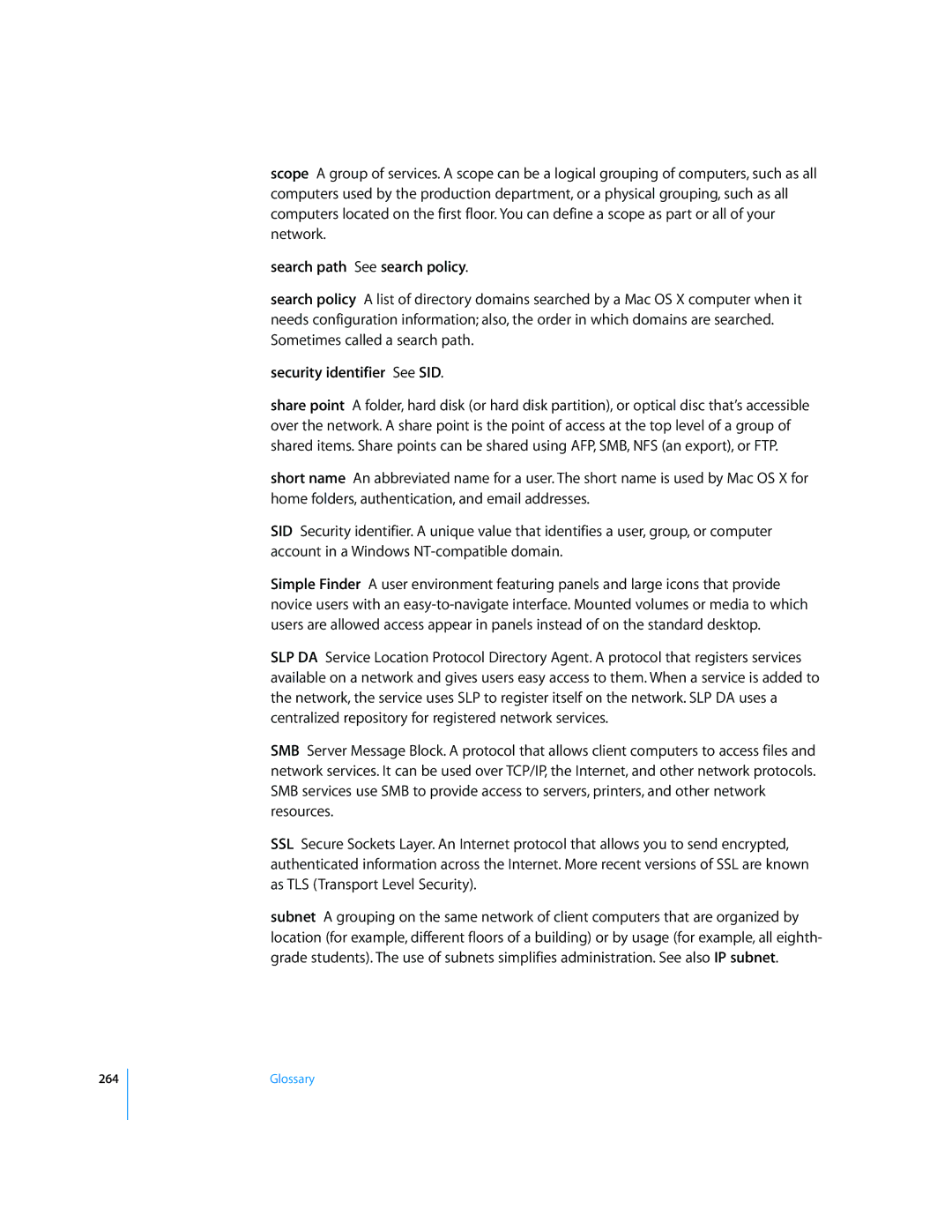264
scope A group of services. A scope can be a logical grouping of computers, such as all computers used by the production department, or a physical grouping, such as all computers located on the first floor. You can define a scope as part or all of your network.
search path See search policy.
search policy A list of directory domains searched by a Mac OS X computer when it needs configuration information; also, the order in which domains are searched. Sometimes called a search path.
security identifier See SID.
share point A folder, hard disk (or hard disk partition), or optical disc that’s accessible over the network. A share point is the point of access at the top level of a group of shared items. Share points can be shared using AFP, SMB, NFS (an export), or FTP.
short name An abbreviated name for a user. The short name is used by Mac OS X for home folders, authentication, and email addresses.
SID Security identifier. A unique value that identifies a user, group, or computer account in a Windows
Simple Finder A user environment featuring panels and large icons that provide novice users with an
SLP DA Service Location Protocol Directory Agent. A protocol that registers services available on a network and gives users easy access to them. When a service is added to the network, the service uses SLP to register itself on the network. SLP DA uses a centralized repository for registered network services.
SMB Server Message Block. A protocol that allows client computers to access files and network services. It can be used over TCP/IP, the Internet, and other network protocols. SMB services use SMB to provide access to servers, printers, and other network resources.
SSL Secure Sockets Layer. An Internet protocol that allows you to send encrypted, authenticated information across the Internet. More recent versions of SSL are known as TLS (Transport Level Security).
subnet A grouping on the same network of client computers that are organized by location (for example, different floors of a building) or by usage (for example, all eighth- grade students). The use of subnets simplifies administration. See also IP subnet.
Glossary
